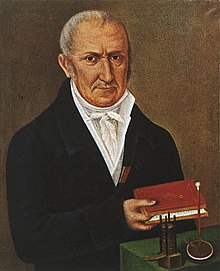Thursday, 6 November 2014
Tuesday, 4 November 2014
Famous Scientists who have impacted Electrical and Electronic Engineering
Who are the scientists that gave their names to electrical units such as Volts, Amps, Ohms, Coulombs etc? Who are all these people that we name theorems after in the lectures?
In this page we profile some of the famous names that we have in the Electrical and Electronic Engineering discipline. Perhaps there is a role model on this page that you can identify with.
Alessandro Guiseppe Antonio Anastasio Volta André-Marie Ampére
André-Marie Ampére James Prescott Joule
James Prescott Joule Georg Simon Ohm
Georg Simon Ohm Charles William Siemens
Charles William Siemens Charles-Augustin Coulomb
Charles-Augustin Coulomb Michael Faraday
Michael Faraday Joseph Henry
Joseph Henry Nicola Tesla
Nicola Tesla Wilhelm Eduard Weber
Wilhelm Eduard Weber Heinrich Rudolf Hertz
Heinrich Rudolf Hertz Guglielmo Marconi
Guglielmo Marconi Gustav Robert Kirchhoff
Gustav Robert Kirchhoff Léon Charles Thévenin
Léon Charles Thévenin Edward Lawry Norton
Edward Lawry Norton

Alessandro Guiseppe Antonio Anastasio Volta (b. Como, Italy, 18th Feb.1745, d. Como, Italy, 5th March 1827) was a pioneer in the field of electricity. The SI unit of electric potential was named after him as the Volt. The portrait (above) was featured on the Italian 10,000 Lire banknote. He came from a Lombard family ennobled by the municipality of Como and almost extinguished, in his time, through its service to the church. One of his paternal uncles was a Dominican, another a Canon and the third an Archdeacon. His father, Filipo (1862-1752), after eleven years as a Jesuit, withdrew to propagate the line. Filipo married Maddelena de' conti Inzaghi in 1773. They had seven children; three girls, two of whom became nuns; three boys who followed the careers of their uncles; and Alessandro, the youngest.
Alessandro was about seven when his father died. His uncle the Canon took charge of his education. Alessandro joined the local Jesuit College in 1757. His quickness soon attracted the attention of his teachers. In 1761 the philosophy professor, Girolamo Bonensi, tried to recruit him. This made his uncle want to take him from school. Volta continued his education at Seminario Benzi. His uncle wanted him to be an attorney. But, Volta chose the study of electricity.
Alessandro was a large, vigorous man. He actively practised the Catholic faith. He, in the words of his friend Lichtenberg, "understood a lot about the electricity of women." For many years he enjoyed the favours of a singer, Marianna Paris, whom he might have married but for his theological and family opinion.
Volta developed the concept of 'state of saturation of bodies' to explain attractions and repulsions of electrified bodies. The electrophore he invented was severely criticized by Beccaria, one of the chief authorities in electricity. In 1774, he became the principal of the state Gymnasium in Como. In 1775, he was granted the professorship of experimental physics. Cavendish's memoir of 1771 made Volta transform his notion of 'natural saturation' into the concept of potential. His last memoir was on galvanic and common electricity. Seeing Volta's demonstrations, Napoleon raised him to Count and Senator of the kingdom of Italy. During the last 20 years of his life he had the income of a wealthy man.
Disqus Shortname
sigma-2
Comments system
[blogger][disqus][facebook]












